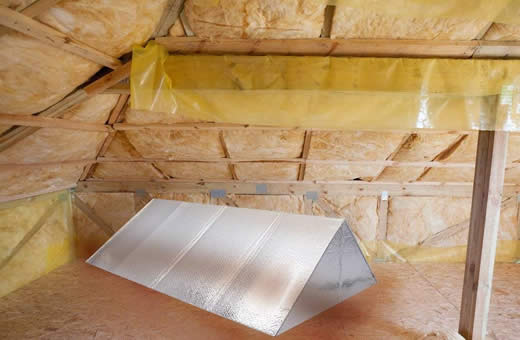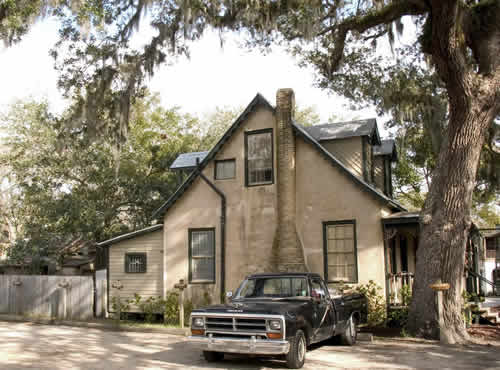How to Cut Air Conditioning Costs Dramatically in 4 Steps
Have you noticed every summer your electricity bill gets bigger as the cost of running your air conditioning gets ever greater?
I'm pretty sure you'd like to pay less, not more, right?
Would you like to know how to cut air conditioning costs at the source by doing a few simple yet effective things that may surprise you!
Great! Then I'll show you how in four steps:
The 4 Steps to Lower Electricity Bills
It really only takes four simple steps to really lower the amount of electricity your cooling system uses each summer. Here they are:
Step 1: Thermostat!
This is probably a real duh moment for many people, but take a look at the AC central thermostat and see what temperature you have it set to. My guess is it's lower than it needs to be!
 Many homes I visit in my travels during summer feel lovely and cool when I come in from the heat of the outside. But a quick glance at the thermostat tells me where they homeowners are throwing away a lot of money year after year.
Many homes I visit in my travels during summer feel lovely and cool when I come in from the heat of the outside. But a quick glance at the thermostat tells me where they homeowners are throwing away a lot of money year after year.
I routinely see a setting of 68ºF and sometimes even lower.
That's too cold!
Did you know that by raising the thermostat by just a few degrees you could save a surprising amount of money by using a lot less electricity to keep the home comfortably cool? You can!
Raise it to 72ºF and you'll have a very comfortable climate and your bank balance will look a whole load better. Just 4º can make a huge difference to the amount of energy the system uses to keep the house at a comfortable temperature.
Wait a minute. Won't it feel warm at that temperature?
I often hear that question asked and the simple answer is, "No!" Here's why.
Remember last winter? Was it a cold one for you? What temperature did you have the heating thermostat set to so you could feel warm enough to be comfortable without it feeling too warm indoors?
My guess is you probably set it a little high at around 75ºF, am I right?
I bet you didn't have to peel off all your clothes and sit in front of fans because you were so hot. More likely you were dressed sensibly for winter indoors and maybe even wore a sweater or other warm clothing despite the heated interior.
If that temperature feels comfortable but not too warm in winter, why shouldn't it feel just right in summer too?
The truth is you were wasting energy in winter just like you're wasting it in summer. There's a psychological factor at work here and if you can get your head around it, you can see the obvious solution staring right at you!
If you were to set the summer and winter temperature on your thermostat to 72ºF you'd experience a steady, comfortable and economical indoor climate all year round. It would cost you less too!
Step 2: Insulate
 If your home is poorly insulated, you could be wasting money to keep it cool inside.
If your home is poorly insulated, you could be wasting money to keep it cool inside.
Some of that energy your HVAC system is using to cool the air is being wasted as heat from the outside is leeching in through poorly insulated or un-insulated walls and attic space. At the same time, the cooler air leeches out of the building the same way.
That forces the HVAC to work harder to maintain the cooler temperature inside. That means it uses more energy and that costs you more money!
Plug that gap by investing in some good wall and attic insulation and see your investment returned in just a few years in lower energy bills!
Step 3: Gaps and Cracks
This may not necessarily apply to newly built homes, but it certainly may to older ones. As window and door frames age, they shrink a little, creating small gaps that you often don't notice.
Similarly, cracks can appear in masonry around door and window frames as buildings settle over time.
Those gaps allow hot air from outside to get in while the cool air inside leeches out. That causes the HVAC or AC system to work harder to keep the temperature cool, which uses more energy and costs more money!
Fill in cracks in masonry and any gaps you can find between wood window and door frames and brickwork with caulk. That will stop some of the leakage and reduce the load on your cooling system. It will use less energy and that will cost you less!
Step 4: Shading
 This is a point that is often overlooked by homeowners, but on hot sunny days, the sun is beating down on walls and heating them up a lot.
This is a point that is often overlooked by homeowners, but on hot sunny days, the sun is beating down on walls and heating them up a lot.
That heat gets transferred to the inside unless walls are super-thick or very heavily insulated. Most homes in the US are not so well insulated!
One simple way of reducing the amount the exterior walls can heat up is to shade as much of them as possible from the direct rays of the sun. Shading is the answer!
There are several ways to achieve this. A common solution is to have retractable awnings or energy efficient window attachment fitted around the home, especially over windows to prevent the sun shining through the glass and heating up the inside.
It may seem almost too simple, but you can also help keep the inside cooler by drawing drapes across windows that face the sun during the day. Sure it blocks out some natural daylight, but the reduction in added heat makes it worth it in very hot weather.
Another way is to use shade trees and shrubs strategically placed around the house to shade the walls that the sun shines on most.
Low Tech Energy Saving
These four steps are actually very low tech ways to help reduce the load on your home's cooling system.
They can save you money on running anything from a whole house central system to an efficient single room sized portable air conditioner.
These solutions are simple enough to deploy and aside from having insulation and professionally fitted awnings installed, can be achieved by most people with a handyman mindset.
If you live in an area with a dry climate, you could make even greater savings on your energy consumption by using low-cost vent free evaporative cooling devices instead of AC. But that's a topic for a whole other article (which you can read by clicking that link).
Summary
There are many things that can be done to reduce a building's energy usage over time.
Making use of some or all of the tips above can make a big difference. Remember, saving energy also saves you money when the next electricity bill arrives, amking it a no-brainer to do whatever you can to improve your home's energy efficiency.
It doesn't take hugely complicated methods to save money on indoor climate control when you know how to make use of the simplest ones first!
[Back to TOP]

